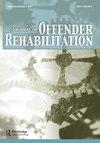Conviction celerity and intervention compliance as predictors of DUI recidivism: a mediation model of deterrence among Kentucky DUI offenders
IF 1.1
Q3 SOCIAL WORK
引用次数: 1
Abstract
Abstract Approximately one-third of DUI offenders in the United States are repeat offenders. The criminal justice system has used both deterrence-based and rehabilitation approaches to prevent DUI recidivism. However, existing studies have not examined deterrence and rehabilitation as they relate to DUI recidivism in a single model. The goal of this study is to simultaneously examine the effects of an established deterrence-related measure (conviction celerity) and a rehabilitation outcome (intervention compliance) on DUI recidivism, specifically whether intervention compliance mediates the relationship between conviction celerity and DUI recidivism. Utilizing a statewide sample of DUI offenders (N = 6,936), a mediation model was tested to examine intervention compliance as a potential mediator between conviction celerity and recidivism, controlling for known correlates of DUI recidivism. The mediation model was unsupported, but compliance was significantly related to DUI recidivism. Several covariates were also related to compliance and recidivism. Findings suggest that compliance and other factors may increase the risk of DUI recidivism among certain populations. Results demonstrate the need for the criminal justice system and behavioral health providers to thoroughly assess DUI offenders to identify those at higher risk of recidivism, while emphasizing offenders’ treatment needs, treatment accessibility, and treatment retention in order to decrease DUI recidivism.定罪速度和干预依从性作为酒后驾车再犯的预测因素:肯塔基州酒后驾车罪犯威慑的中介模型
摘要在美国,大约三分之一的酒后驾车罪犯是惯犯。刑事司法系统使用了基于威慑的方法和康复方法来防止酒后驾车累犯。然而,现有的研究并没有在单一模型中检验威慑和康复,因为它们与酒后驾车累犯有关。本研究的目的是同时检验既定威慑相关措施(定罪快速性)和康复结果(干预依从性)对酒后驾车累犯的影响,特别是干预依从性是否介导定罪快速性和酒后驾车累罪之间的关系。利用全州范围的酒后驾车罪犯样本(N = 6936),测试了一个中介模型,以检查干预依从性作为定罪快速性和累犯之间的潜在中介,控制酒后驾车累犯的已知相关性。调解模式不受支持,但依从性与酒后驾车累犯显著相关。几个协变量也与依从性和累犯有关。研究结果表明,在某些人群中,依从性和其他因素可能会增加酒后驾车再犯的风险。结果表明,刑事司法系统和行为健康提供者需要彻底评估酒后驾车罪犯,以确定那些再犯风险较高的人,同时强调罪犯的治疗需求、治疗可及性和治疗保留,以减少酒后驾车再犯。
本文章由计算机程序翻译,如有差异,请以英文原文为准。
求助全文
约1分钟内获得全文
求助全文
来源期刊

Journal of Offender Rehabilitation
SOCIAL WORK-
CiteScore
1.60
自引率
0.00%
发文量
24
期刊介绍:
The Journal of Offender Rehabilitation is a multidisciplinary journal of innovation in research, services and programs in criminal justice and corrections. The journal is an essential professional resource for practitioners, educators and researchers who work with individuals involved in the criminal justice system and study the dynamics of rehabilitation and individual and system change. Original research using qualitative or quantitative methodology, theoretical discussions, evaluations of program outcomes, and state of the science reviews will be considered.
 求助内容:
求助内容: 应助结果提醒方式:
应助结果提醒方式:


